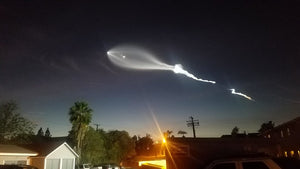February- Mercury at Elongation
Feb. 26: Mercury is at greatest eastern elongation. This is a great time to see the innermost planet in our solar system. Search for it in the evening sky close to the western horizon after sunset.
Mercury's orbit is closer to the Sun than the Earth's, meaning that it appears close to the Sun and is not visible because of the Sun's glare much of the time.
It is observable for only a few days each time it reaches greatest separation from the Sun – moments referred to as greatest elongation. These apparitions repeat roughly once every 3–4 months.
These apparitions take place alternately in the morning and evening skies, depending whether Mercury lies to the east of the Sun or to the west.
When it lies to the east, as it does now. It rises and sets a short time after the Sun and is observable in early evening twilight. When it lies to the west of the Sun, it rises and sets a short time before the Sun and is observable shortly before sunrise.
Be sure to catch a glimpse of this celestial body on the evening of the 26th . Look west in the early evening sky after sunset.







